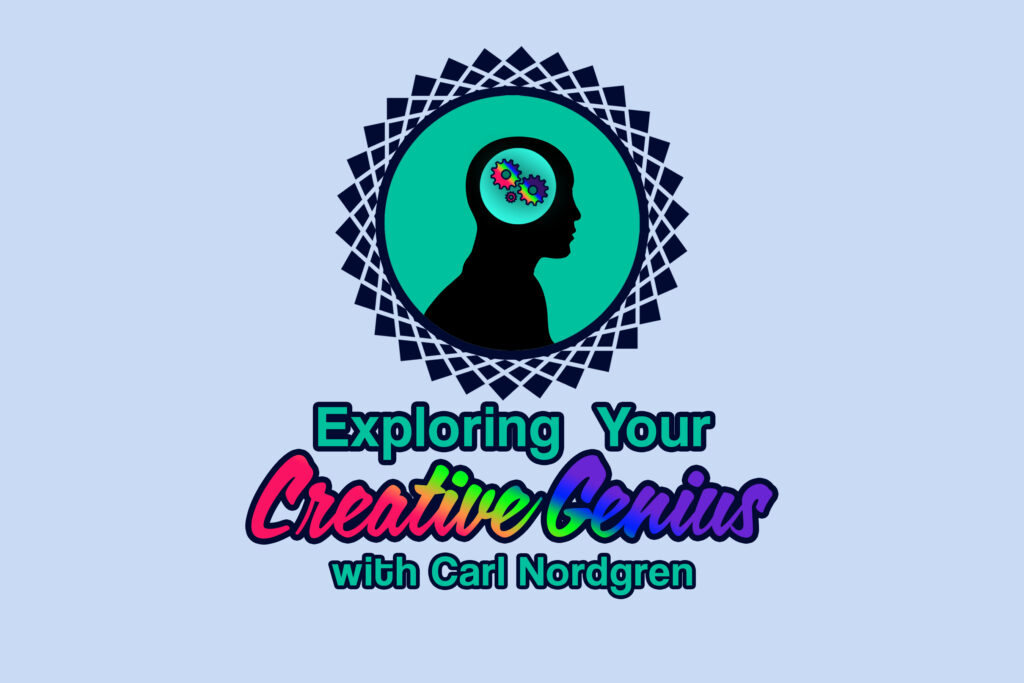Becoming a Creative Genius (again): Great News for folks 60+
“There is a fountain of youth: it is your mind, your talents, the creativity you bring to your life and the lives of the people you love. When you learn to tap this source you will truly have defeated age.” – Sophia Loren
After a decades-long career as an entrepreneur I have spent over twenty years helping folks of all sorts — college students and entrepreneurs, creative professionals and military leaders, artists and parents and business managers — grow their creative capacities and develop their entrepreneurial instincts and behaviors.
For most of that span I have understood this work to be helping folks reclaim their natural-born creative genius.
It is only recently that I am coming to appreciate how and why it’s folks entering their 60’s and 70’s who should be most optimistic about achieving that sort of wonderfully restorative creative growth.
As I am learning how the aging brain changes, biologically, I have discovered some significant changes that each invite fresh creative growth and improved entrepreneurial performance.
Collectively these changes suggest an aging brain’s creative growth is limited only by the ambitions of its host.
A summary of those changes:
- Myelination is finally completed. Myelin is the fatty substance that coats the fibers connecting your brain’s neurons. Those fibers, called axons, send and receive electrochemical signals. When axons are coated with myelin they are not only protected, but their performance improves: signal transmission is accelerated and more reliable.
We are born with very little myelin and experience 5 to 7 waves of myelination over our lives. The first wave focuses on the motor control and sensory control areas of our brains which makes sense since we want toddlers to be successful navigating their physical environments. Later waves attend to the rest of our brains, with a focus now on our prefrontal cortex. Each layer of myelin accelerates the signal speed even more and the last wave doesn’t occur ‘til somewhere around your 55th birthday.
So, it’s not until that happens that our brains are at peak performance for this extraordinarily important function. As the late neuroscientist Dr. Bartzokis of UCLA, a pioneer in this field, put it: “It appears there is a biological explanation for wisdom.”
- Bilateral cognition supports creative thinking. Another major change is a creative strength born of our loss. Most brain functions are fairly localized and processed in one or the other hemisphere. But as we age and certain functionality does weaken the brain compensates by re-purposing and integrating brain functions from the opposite hemisphere, as a work around—when your strength to lift something one handed diminishes, you use both hands. This is accomplished efficiently and effectively and results in our brains much more frequently using both hemispheres to solve problems.
There are a number of research projects that demonstrated that it’s an integrated brain, one where the two hemispheres are working together, that is a most creative brain; we want the logical dancing with the nonlinear, the analytical playing with the intuitive to be most creative and at 55+ that happens naturally.
We thank Dr. Cabeza, from Duke, for this research.
- The prefrontal lobe and the status quo. The prefrontal lobe is packed with important high-level executive control functions you’ve relied on all your life. But it also fiercely and constantly defends your status quo perspectives and understandings against all unfamiliar intrusion; it is your brain’s inhibitor. The prefrontal lobe begins to abandon that role as the brain ages, receiving and processing many more unexpected inputs; that is very frequently where the great creative breakthroughs occur, when your status quo thoughts are disrupted by those inputs you hadn’t anticipated. Neuroscientists have found that our 55+ brains become indistinguishable from a ‘high creatives’ brain functioning in this vitally important area.
If we keep in mind that the status quo is the greatest impediment to innovative thinking and fresh creative perspectives we can create new advantage from the fact that an aging brain is naturally shedding its inhibitory qualities.
- Crystallized intelligence. Your crystallized intelligence is your ability to effectively mine your lifetime of experiences and knowledge bases to find new relationships, to develop more complex understandings. Scientists have long known our crystallized intelligence begins to improve in your late 50’s and peaks in your 70’s and we now have biological explanations for why. Your brain is communicating with itself faster than ever, in new expansive ways.
The best way to have a great idea is to have lots of ideas, and an aging brain’s crystallized intelligence is primed and ready to deliver a wide array of options when you exercise it intentionally.
When Steve Jobs was asked to define creativity he said it’s simply connecting the dots, so make sure you have lots of dots. At our ages, we have lots and lots and lots of dots. And our brains become much better at relating them to each other for new thoughts and perspectives.
Another result researchers have discovered from these changes to an aging brain is that your ability to evaluate contradictory ideas and remain objective peaks in your 60’s and of course the ability to make decisions and take action when dealing with ambiguity is vital to successful creative and entrepreneurial work.
So eat lots of Omega 3 fatty acid foods — it repairs and restores myelin —and take lots of walks, that too integrates our brains. Find new interests or fields of study, to support your brains’ new high performance levels, and age into creativity!
 “Exploring Your Creative Genius” takes an expansive view on what it means to be creative and entrepreneurial in an ongoing conversation led by Carl Nordgren — entrepreneur, novelist, and lifelong student with decades of experience growing his own creative capacity and assisting others to do the same in exciting new ways!
“Exploring Your Creative Genius” takes an expansive view on what it means to be creative and entrepreneurial in an ongoing conversation led by Carl Nordgren — entrepreneur, novelist, and lifelong student with decades of experience growing his own creative capacity and assisting others to do the same in exciting new ways!
You can also find more ways to explore your creative genius in this column’s companion radio program, broadcasting on 97.9 The Hill WCHL and posted here on Chapelboro!
Chapelboro.com does not charge subscription fees, and you can directly support our efforts in local journalism here. Want more of what you see on Chapelboro? Let us bring free local news and community information to you by signing up for our biweekly newsletter.


